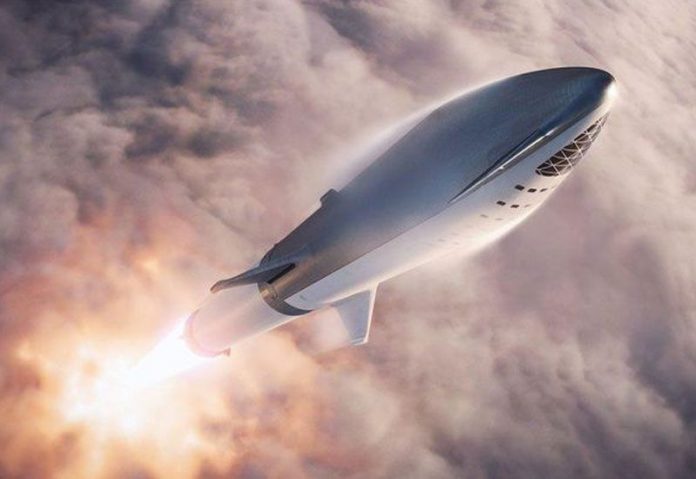Ultra-fast spacecraft could one day soon see passengers travelling between Dubai and London in just 29 minutes, according to a new report from UBS.
The UBS report estimated that the wider space industry will be worth $5400 billion by 2030, compared to $805 billion today
The UBS report said high-speed travel through outer space will represent an approximately -$20 million market in ten years and will compete with long-haul airlines, which would be considerably slower alternatives.
“While space tourism is still at a nascent phase, we think that as technology becomes proven, and the cost falls due to technology and competition, space tourism will become more mainstream,” said UBS analysts Jarrod Castle and Myles Walton. “Space tourism could be the stepping stone for the development of long-haul travel on earth serviced by space.”

As an example of the possibilities, UBS pointed to Elon Musk’s California-based SpaceX, which has said that its ‘Starship’ rocket will eventually be able to transport 100 people around the world in minutes.
The Starship rocket is designed to exit and re-enter the earth’s atmosphere, with a passenger pod traveling to its final destination at maximum speeds of 27,000 km per hour.
According to SpaceX estimates, this speed means that a trip between Dubai and London could be accomplished in 29 minutes. Currently, a conventional flight between the two locations takes 8 hours.
The company says that the flights – which would encounter no wind resistance – would be able to cut virtually every trip possible on earth to under an hour, with most flights taking less than half an hour. New York to Shanghai, for example, would take 39 minutes, as opposed to the current 15 hours.
In its report, UBS estimated that approximately 150 million people travel on flights of over 10 hours, with 527,000 routes averaging 309 seats each.
“If we assume that 5 percent of these flights in the future are serviced by space at $2,500 per trip, the revenue opportunity as of today would be more than $20 billion per year as of today…there is a large market,” the report said.

UBS noted that although Starship’s rockets will be unlikely to transport more than 100 people for the foreseeable future, increasingly frequent rocket flights will be able to eventually transport the same volume of passengers.
“Given the length of long-haul commercial travel and the rules around crewing and take-off and landing time slot restrictions at airports, we think a re-usable rocket…would have materially better utilisation rates than a commercial plane,” UBS added.
Virgin Galactic’s UAE plans
Earlier this week, it was reported that the UAE Space Agency is in talks with Richard Branson’s Virgin Galactic to operate commercial space flights for tourists from Al Ain International Airport.
Last month, the firm – which is partially owned by Abu Dhabi’s Mubadala – launched its SpaceShipTwo from the Mojave test carrying its first passenger and two pilots on its first voyage into space.
“Virgin Galactic is the first business space agency in the world and has conducted successful trial flights recently,” said UAE Space Agency director Mohammad Al Ahbabi. “The reason why the company opted for Al Ain airport is that it is less crowded than other UAE airports.” More
By Bernd Debusmann Jr arabianbusiness.com

















